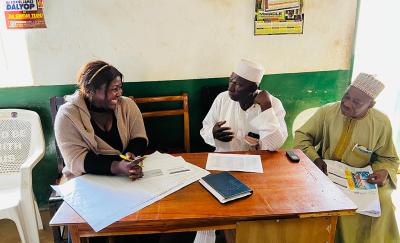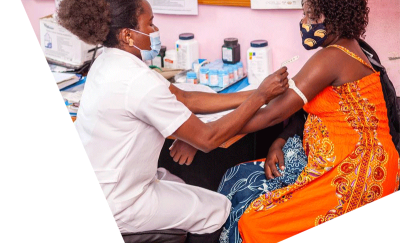Interview with Arun Asok: Mobilizing Private Capital for SDGs


There's a significant private capital gap to achieving the Sustainable Development Goals (SDGs). When the SDGs were formulated in 2015, the financing requirement was estimated to be $2.5 trillion annually. We were already behind that target before the COVID-19 pandemic and since then, a significant amount of funding has been diverted to responding to and recovering from the pandemic.
The current SDG funding requirement is estimated to be upwards of $4 trillion annually. Only about $1.5 trillion dollars is being met by governments; there is a significant gap that private capital needs to fill.
Arun Asok is the Senior Advisor for Private Capital and Impact Investing at Abt Global. I had the opportunity to sit down with Arun and discuss Abt’s work mobilizing private capital to advance the SDGs, critical challenges and opportunities in private capital mobilization, and the webinar series he is hosting to explore these issues.
1. You started at Abt last year and have been helping Abt mobilize private capital for development in a variety of ways. What brought you into this space?
After the global economic crisis in 2008, I was working with a microfinance firm in India. The experience taught me there are sustainable and for-profit solutions for various development challenges, not just in financial services but across sectors. And sitting right at the center of these solutions was impact investing—the idea of bringing commercial investments to development.
Impact investing aligned well with my values and skill set, and I’ve now worked for nearly 15 years largely in investment and portfolio management with impact investing funds. Before Abt, I worked with Bamboo Capital Partners managing funds that invest in Africa and Asia, particularly in healthcare, financial services, and renewable energy.
A key element that attracted me to Abt is Abt’s strategic and operational expertise across sectors such as healthcare, energy, and agriculture and the ability to mobilize public resources. Abt also has deep experience at the intersection of key issues, such as climate and health, and emphasizes equity and inclusion issues as fundamental to effective program design and implementation. Impact investing requires a keen understanding of development challenges, identifying the right capacity-building needs, measuring and evaluating impact, and enabling public-private engagement. Abt has strong expertise in these areas.


2. The scale of the need for private capital to advance the SDGs is enormous, and the COVID-19 pandemic amplified that. Considering where we were leading up to the pandemic and where we are now, what are the most significant trends in private capital mobilization for development?
On the positive front, private capital for the SDGs has grown significantly over the last decade. Impact investing is currently over a trillion dollars in assets globally. Growth has been significant; most sectors have been growing at over 25% annually.
The Global Impact Investing Network regularly reports that most impact investors are seeking and delivering market-rate returns. So private capital isn’t just growing, it's growing sustainably: providing investors with competitive financial returns in addition to impact returns.
3. What have been the key challenges?
Most of the growth in impact investing has been skewed towards certain sectors and geographies.
Sectorally, impact investing has tended to focus on financial services, renewable energy, and agriculture while healthcare, water and sanitation, education, affordable housing, etc. do not receive sufficient capital.
Geographically, certain countries such as India, Indonesia, Kenya, and Mexico take the lion’s share of impact investments, while many lower-income countries are underinvested.
The pandemic exacerbated these challenges by showing the fault lines, especially in healthcare, and the dire need for more private capital to come in.


4. Why is it that private capital isn’t being mobilized at scale towards these sectors and geographies?
First, underinvested sectors and geographies have more nascent and less proven business models, so there's a higher risk for private capital players to invest.
Second, over 90% of impact assets are headquartered in the Global North. While they may have investment teams in emerging markets, the investment committees—where the decisions are made—are in the Global North headquarters. This impacts the investment process, especially pipeline sourcing and the ability to make nuanced investment decisions for a specific sector or geography. And the lack of diversity across the investment process also negatively affects the ability to find and assess opportunities with diverse entrepreneurs, sectors, and geographies.
However, even with more localization and diversity, there is a need for public investors to provide catalytic capital that helps reduce risk for private investors. This is where blended finance comes in: public investors providing first loss or guarantee or other catalytic capital to reduce risk for the private investors and mobilize more capital toward development objectives.
While blended-finance approaches have been growing significantly of late, there needs to be more additionality—targeting underserved sectors and geographies that have higher investment risks but huge potential for impact at scale.
5. Are there any lessons you’ve taken from Abt’s work in private capital mobilization when it comes to increasing private capital mobilization to address the challenges and gaps you’ve described?
The Investing in Women (IW) program in Southeast Asia illustrates how Abt brings some of these solutions to fruition and uses public funding to scale investment into underinvested sectors and geographies. IW catalyzed focus on gender-lens investing when it was very nascent, especially in Southeast Asia. The program supported ten gender-lens investing partners with AUD 15.4 million in DFAT investment funding and mobilized over AUD 291 million through follow-on investments by partnering with private investors and other public investors resulting in 82 women owned and women led SMEs.


The IW model demonstrates two things:
- First, public funding, in this case from DFAT, can catalyze a tremendous amount of capital from private investors and other public investors in an investment strategy that is nascent.
- Second, there is a pipeline of local fund managers who can execute diverse investment strategies. IW worked with local early stage and diverse fund managers. In the end, over 83 women-led SMEs accessed investment.
Another example is the Health Electrification and Telecommunications Alliance (HETA). HETA aims to provide off-grid electricity to 10,000 health facilities in Africa—mitigating climate change, strengthening climate resilience in the health sector, and improving health outcomes.
USAID provides critical funding for HETA, but we need to raise significant private capital to implement the project. Off-grid electrification for health facilities is a nascent sector. Moreover, the private sector is wary because health centers in the region are largely owned by the public sector, and there is uncertainty around public sector utility payments. USAID funding acts as a risk cushion for private investors, and we are also exploring other mechanisms such as payment guarantees. We are still in the early stages, but the intent is to put together different blended-finance solutions to raise capital at scale for health facility electrification.


We’re exploring opportunities in other projects as well. For example, the Feed the Future Cambodia Harvest III is exploring partnerships with impact investors to provide blended finance solutions – leveraging grant capital from the program to catalyze commercial private capital for farmers and agriculture cooperatives. By thus blending the public and private capital, Harvest III is able to provide affordable and long-term capital to the borrowers alongside technical assistance to further derisk the investments.
6. You're hosting a webinar series on these topics. How can people learn more about it?
The series focuses on the need to scale up and diversity private capital for the SDGs toward underinvested sectors and geographies. We need more localization and diversification of private capital, and a way to get this to happen is by de-risking private capital with more catalytic public funding and focusing on local fund managers. You can learn more about the webinars on our website, and we’ll also be posting recordings. https://www.abtglobal.com/webinar-series-reimagining-private-capital-for-sdgs
Read More

Pathways to UHC: Nigeria’s State and Local Approaches to Financing Integrated HIV Services and Primary Health Care
Nigeria’s state and local government-driven approaches to integrated primary health care are transforming financial protection and access for vulnerable populations, setting a replicable model for sustainable universal health coverage.

Global Digital Health Forum (GDHF) 2024
Abt Global is sponsoring and presenting at the Global Digital Health Forum (GDHF) 2024.

Building Climate Resilience Through Private Sector Partnerships
The Partnership for Climate Action, led by USAID CACCI, helps the private sector contribute to climate resilience through investment and innovation.

The Alliance for LGBTQI+ Inclusive Development presents The Impact of Geopolitical Shifts on Inclusive Development
Abt Global is hosting the upcoming hybrid LGBTQI+ Inclusive Development Summit on November 19, 2024.
